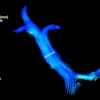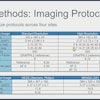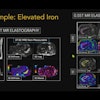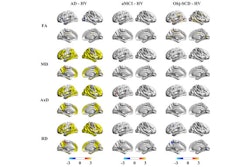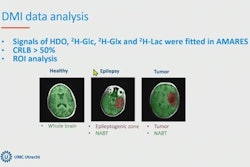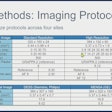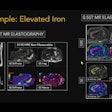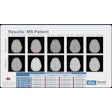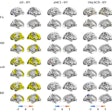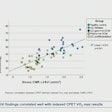Can synthetic amyloid PET images tell if someone has Alzheimer’s disease? The short answer is not very well, according to a May 13 presentation at the International Society for Magnetic Resonance in Medicine (ISMRM) 2025 meeting in Honolulu, HI.
Louise Baron, a doctoral candidate at University College London, and colleagues assessed the clinical relevance of synthetic amyloid PET images derived from T1-weighted (T1W) MRI scans and found they lack key metrics for diagnosing patients.
“We can’t conclude if synthetic PET is useful. The models are nowhere near being ready for a clinical setting,” Baron said.
Amyloid PET scans that detect beta-amyloid deposits in the brain are a key test for diagnosing Alzheimer’s disease, and they are also now used to identify patients who may be eligible for amyloid-targeting therapies. Yet the scans are expensive and less than 2% of people with suspected disease have access to them, Baron noted.
To address this, work has begun recently to use AI models to generate synthetic equivalents to PET images from routinely acquired T1W scans. However, existing work uses evaluation metrics of the images, such as peak signal-to-noise ratio (PSNR) and structural similarity index measure (SSIM), which focus on image quality rather than the clinical relevance of the findings, Baron noted.
 AI models can generate synthetic equivalents to PET images from routinely acquired T1W MRI scans.Louise Baron and ISMRM
AI models can generate synthetic equivalents to PET images from routinely acquired T1W MRI scans.Louise Baron and ISMRM
“So they look at the image globally, but they don't actually look at whether this image would be useful diagnostically with regards to what the clinicians would use,” she said.
To address the gap, Baron and colleagues assessed synthetic PET data further with clinically relevant metrics. Specifically, they analyzed amyloid deposits on the images in specific regions associated with the disease based on mean standard uptake value ratios (SUVRs) in the images. SUVRS are calculated by how much PET radiotracer binds to amyloid deposits.
The researchers used a generative adversarial network (cGAN) model for amyloid PET synthesis that was recently proposed in an earlier study to generate the images. The dataset included 538 paired T1W MRI and Pittsburgh Compound B PET images.
According to the analysis, the synthetic PET images provided a sensitivity of 15%, a specificity of 94%, and an accuracy “only slightly above chance” at 55%, Baron noted.
The goal in future work will be to obtain synthetic PET images that accurately reflect key diagnostic information for Alzheimer’s disease, specifically amyloid buildup in cortical regions, with the recognition that PSNR and SSIM do not measure this, Baron said.
“We need context-specific, amyloid-load based assessments that directly and precisely tell us how well the synthetic PET perform in a diagnostic setting,” she said.
That work is underway, Baron concluded.
Check out AuntMinnie’s full coverage of ISMRM 2025 here.
